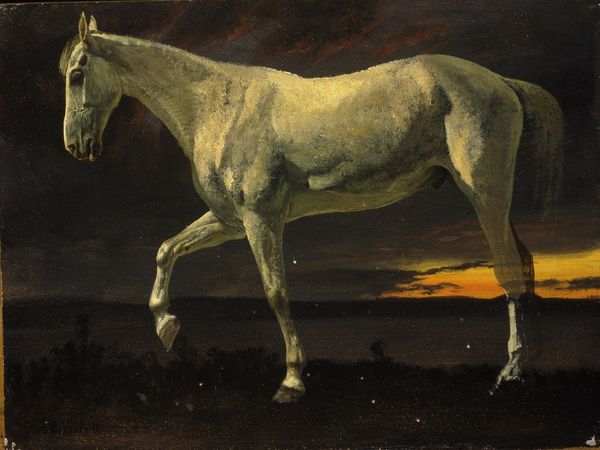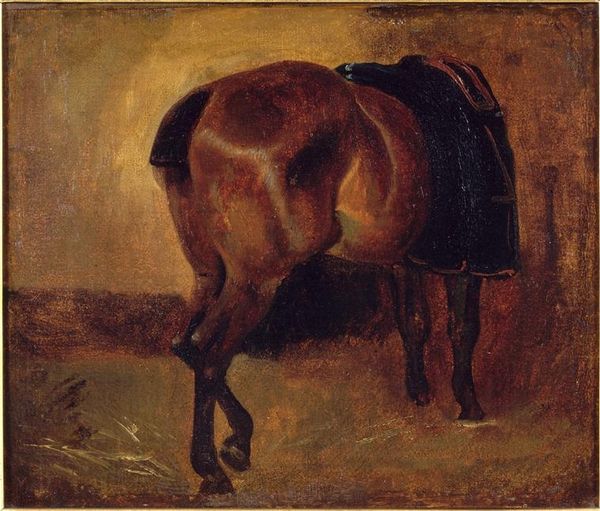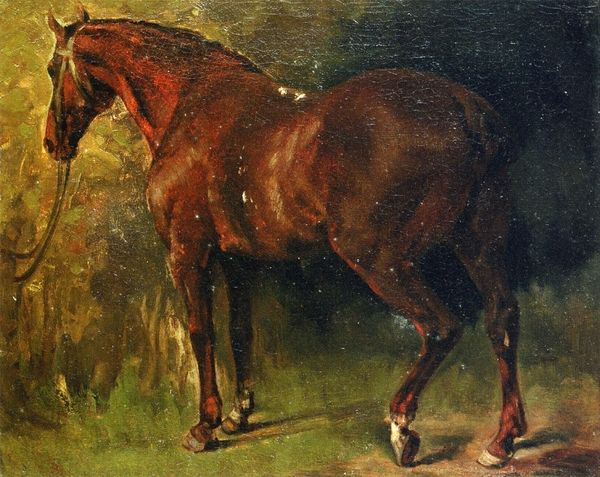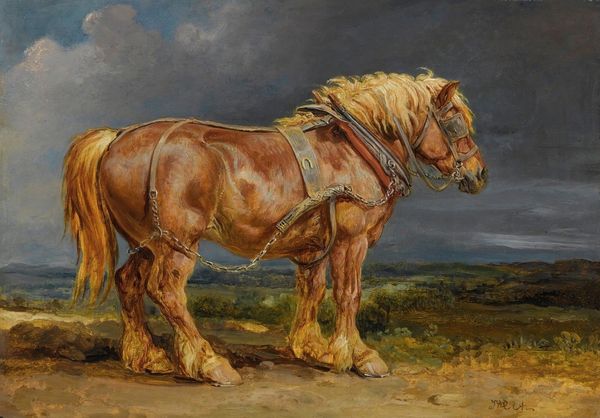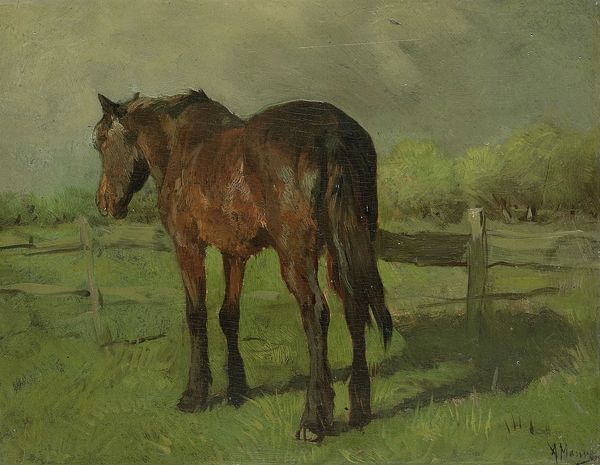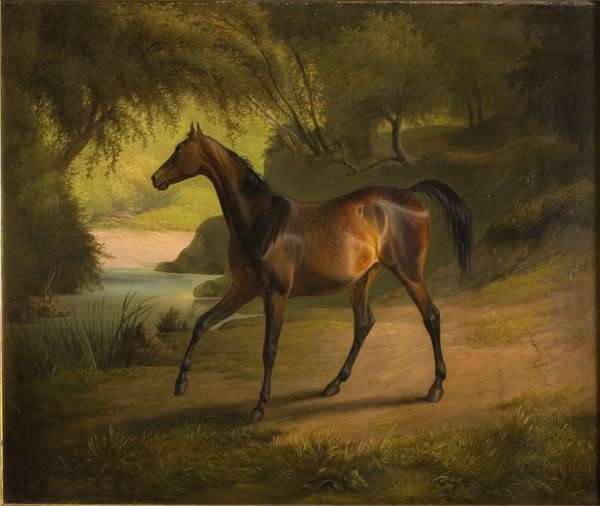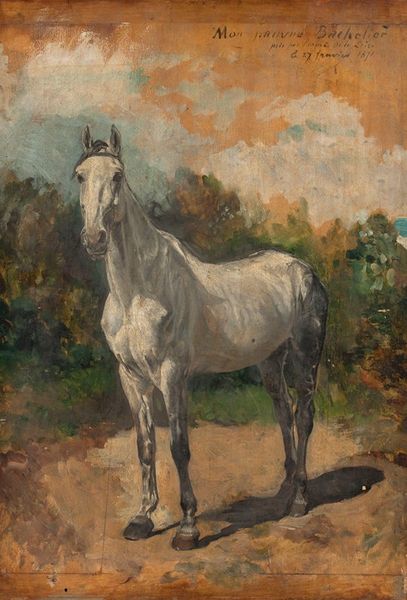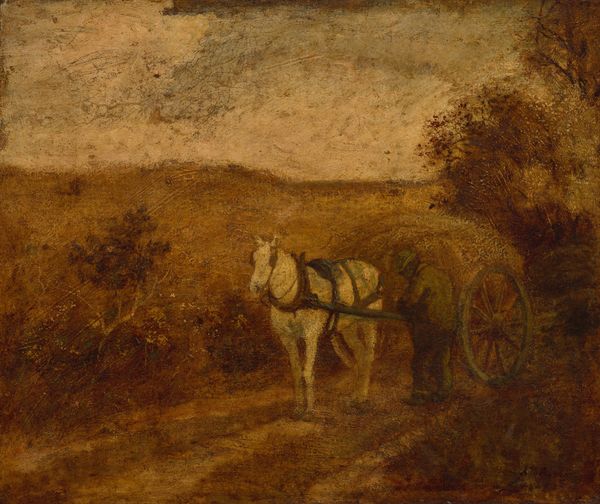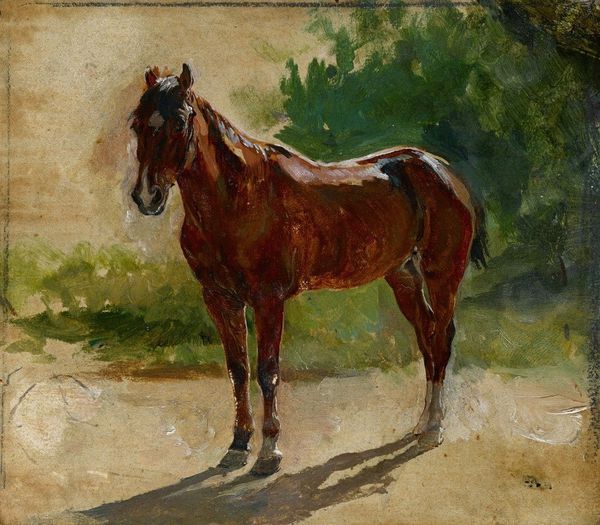
painting, oil-paint
#
portrait
#
painting
#
oil-paint
#
landscape
#
figuration
#
oil painting
#
romanticism
#
history-painting
Dimensions: overall: 19.4 x 21.3 cm (7 5/8 x 8 3/8 in.) framed: 28.7 x 31.1 x 5.1 cm (11 5/16 x 12 1/4 x 2 in.)
Copyright: National Gallery of Art: CC0 1.0
Curator: Eugène Delacroix’s oil painting, "A Horse Hitched to a Post," circa 1820, immediately strikes me as subdued, despite its lively brushwork. Editor: The materiality draws my attention instantly. Notice the visible brushstrokes – the very labor of painting is evident. It speaks to the rapid, expressive way Delacroix built up form and color. I also observe that his methods demonstrate efficiency. Curator: Indeed. The application is rather economical, even hurried, yet it coalesces into a tangible representation. Structurally, the vertical post counterbalances the horse, creating a contained and almost mournful, static quality. A kind of visual arrest. The line connecting the horse and post functions as an indexical sign tying subject and object. Editor: From a materials-focused perspective, how does the oil paint contribute to the texture and depiction of both the horse's coat and the worn wooden post? Delacroix highlights the difference in material texture. The horse almost gleams from labor! What was the purpose of this portrayal in this historical context? Curator: Good question. I would point to Romanticism and its obsession with depicting the "natural" or sublime, but I think Delacroix also conveys a deep, unspoken melancholy through this composition. The lighting directs our gaze. Editor: That directs the conversation of its material history. Considering his workshop and methods of material application reveals that labor in art creates value through production itself – the materiality on display serves a purpose outside visual rhetoric alone. Curator: Yes, I appreciate you highlighting that social and production layer that gives it life! It prevents our analysis from being stuck within form and the pure aesthetic experience. Editor: And recognizing the labour makes me aware that a lot of viewers may come to an appreciation without thinking of materiality or making practices that gave it form. It changes how we encounter even well known paintings like these. Curator: Precisely, so let us, then, carry this newfound insight forward. Thank you for pointing that out. Editor: Thank you. Thinking about the materials and labor helps ground all interpretations – always.
Comments
No comments
Be the first to comment and join the conversation on the ultimate creative platform.
